Up on the roof: Is London moving its gardens to the sky?
- Published

The roof garden on top of John Lewis' Oxford Street store has seen more than 90,000 visitors this summer
Way up above London's bustling streets, previously neglected rooftops are being converted into flourishing wild flower, fruit and vegetable gardens.
"There's nothing quite like looking at the view of the Gherkin through a trellis of green beans," says Kelly Peake, who lives in a flat in Tower Hamlets, east London.
Three blocks of shared ownership and housing association flats share the Silk Gardens Rooftop, which is a member of Capital Growth Network, a charity that encourages food growing in urban areas.
The gardens include wildflowers, roof top boxes, and trees and bushes from which the residents share fruit.
"It's very good for developing the community," says Ms Peake. "Families share the roof space and urban kids get to see where food comes from.
"In a block of flats you wouldn't normally get to meet your neighbours for a sustained amount of time in the corridor."
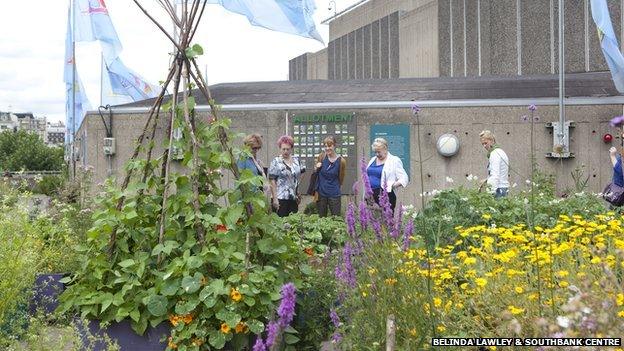
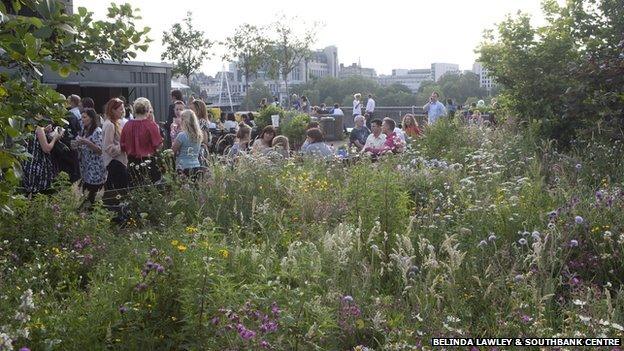
The garden's wildflower meadow contains more than 100 native species
The roof garden, which was set up three years ago is one of hundreds that have sprung up across the capital in recent years.
Back in 2011, Boris Johnson's London Plan set targets to help increase green space, including installing roof gardens, by at least 5% by 2030 and an additional 5% by 2050.
London's mayor said he hoped green roofs would make the city more bio-diverse as well as allowing more recreation and growing of food.
So how is he getting on towards reaching his targets? Is everything looking rosy or are we being led down the garden path?
There are no exact figures available, but a spokesman for the mayor said analysis of aerial imagery covering central London suggested the city was on target.
Tony Woods, who won last year's Royal Horticultural Society award for Young Garden Designer of the Year, said he thought demand for roof gardens was on the up.
"Roof tops have been my biggest growth area - changing from 20% to 60% of my business over five years," he said.
Installing roof gardens has had many benefits to businesses, he believes. "Research shows plants and gardens in the workplace improves health and has a positive impact on business as a whole."
This year Mr Woods designed a roof garden for retailer John Lewis's 150th anniversary celebrations at its flagship Oxford Street store.
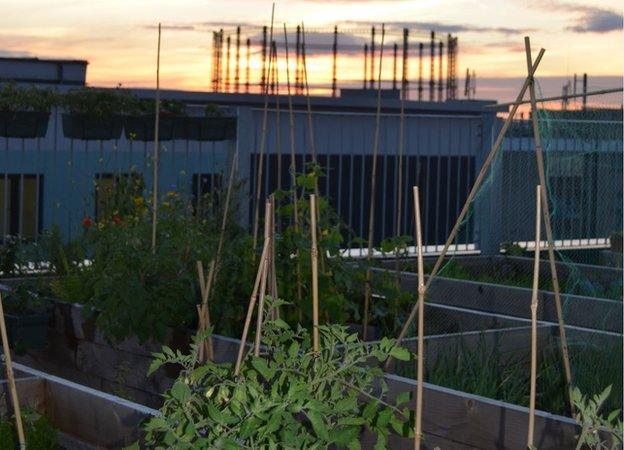
The Silk Gardens Rooftop has boxes and and bushes from which the residents share fruit

Great tits, wrens, blue tits, blackbirds and a pair of goldfinches can be seen at the Southbank Centre's roof garden
Mr Woods said he was amazed some members of staff went to work early to water the plants. "Staff like to volunteer and get involved," he added. "It brings teams closer together."
The result has been a nectar-rich garden including favourite traditional plants, such as roses and lavender, mixed with more contemporary wildflower beds.
Installing roof gardens could also help firms drum up new business, said Mr Woods.
"A meeting in a roof garden, rather than an air conditioned office is more memorable," he said.

Tony Woods won the Royal Horticultural Society award for Young Garden Designer of the Year 2013
Across the River Thames on the Southbank, there is an efflorescent roof garden with a difference. The Queen Elizabeth Hall Roof Garden employs gardeners who have suffered from homelessness, drug addiction or mental health problems.
"They absolutely love it outdoors," said roof garden coordinator Julian Cox. "It's an incredibly vibrant yet relaxing environment to work in."
In the allotment, kale, potatoes, mustard, and cabbage have been harvesting, proving educational to some visitors.
"Some young people that come up to the garden for workshops have never seen vegetables growing or knew that we get seeds from plants," said Mr Cox.
The garden's wildflower meadow contains more than 100 native species, including Snakeshead Floatillary and Viper Bugloss, while the garden's bird feeders mean great tits, wrens, blue tits, blackbirds and a pair of goldfinches can regularly be spotted swooping into the garden.
But not everyone thinks enough is being done to encourage people to turn their roofs green.
Jenny Jones, leader of the Green Party's London group, said: "There is huge potential in roof gardens but the mayor has set very unambitious targets and failed completely."
"He could offer incentives to businesses and residents."
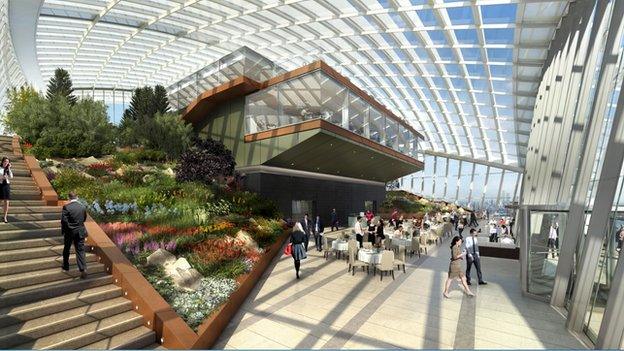
20 Fenchurch Street will have the capital's highest roof garden
One ambitious roof garden near completion is the Sky Garden, which is being installed at the top of the City's newest skyscraper, 20 Fenchurch Street - dubbed the "Walkie Talkie" because of its unusual shape.
The garden will offer the capital's highest roof garden - at 37-storeys - when it opens later this year.
Looking ahead, perhaps it will be London's walls that will be next to embrace flower power.
Gardener Mr Cox said he had seen a 40% growth in business for vertical gardens in the past year.
Dubbed "living walls", these can "absorb heat that would normally go into the building, take excess water away that could cause flooding and also insulate a building during the winter," he said.
- Published21 July 2014
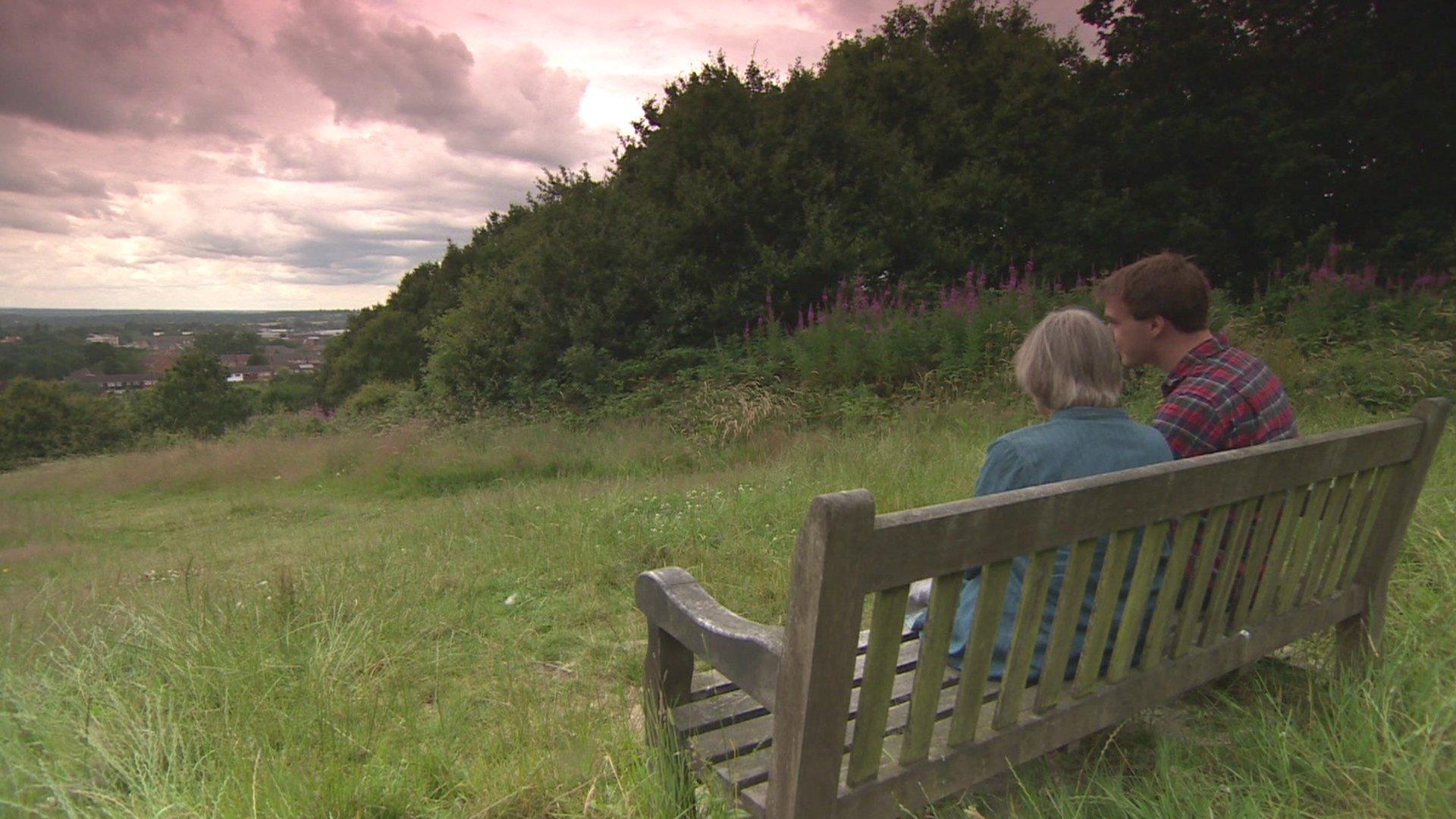
- Published18 July 2014

- Published8 June 2013
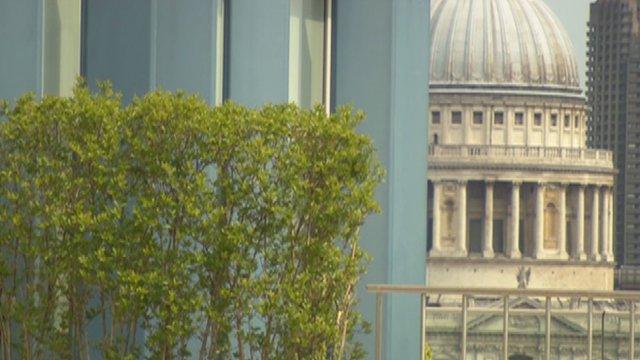
- Published18 June 2012
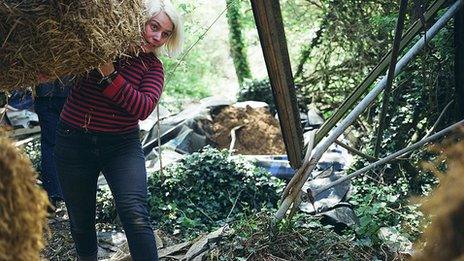
- Published26 June 2010